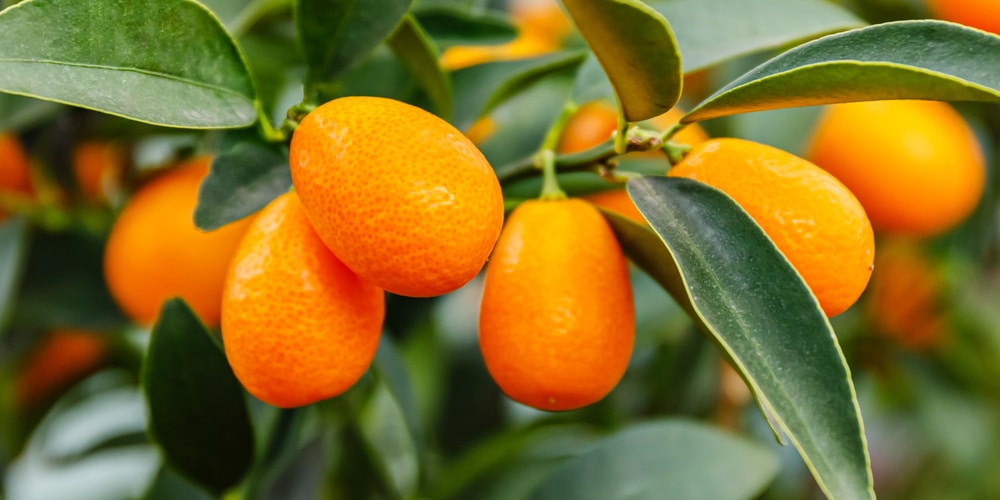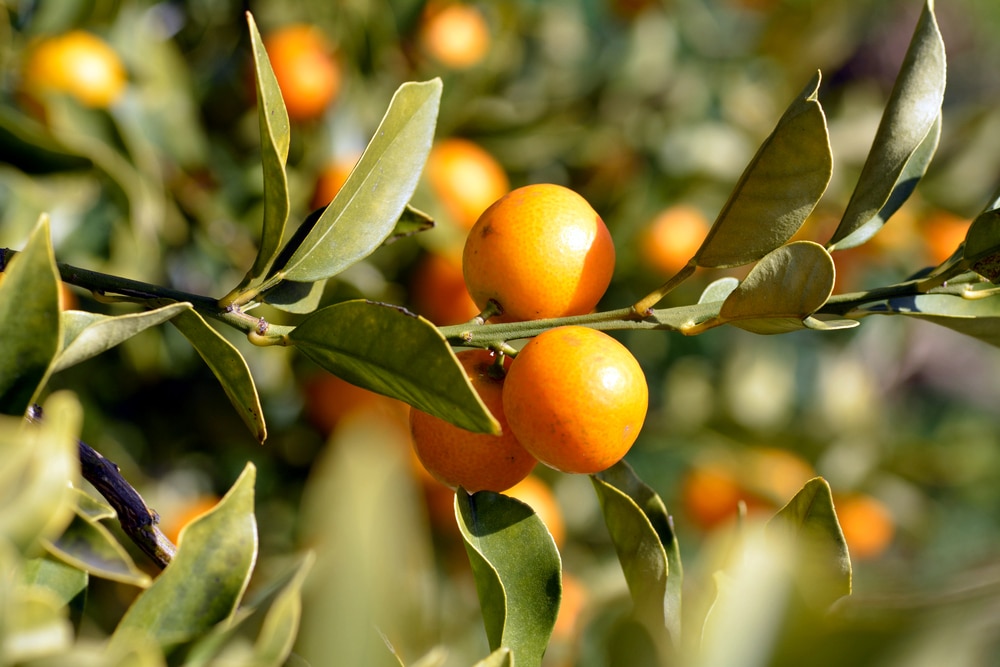Kumquats are not native to Florida, but they do grow well in the state’s warm climate. Florida is an excellent place for growing kumquat trees, and there are several varieties that excel here. Common choices include the Nagami Kumquat, the most commonly grown variety in FL. Meiwa Kumquat, Centennial Variegated, and Marumi Kumquat are also popular choices. All these varieties are self-fertile and can be grown in various soil types. This article will look at how to grow and care for kumquat trees in Florida.
Kumquat tree Florida

Kumquat trees have the botanical name Fortunella and are native to Asia. They are part of the Rutaceae family. The fruits were initially imported from Asia to Europe by botanist Robert Fortune in the 19th century. From there, they made their way to the rest of the world.
Kumquats can thrive in hot tropical climates and can cope with drought. They are evergreen trees that remain relatively small at maturity and are generally between 8 and 15 feet tall.
The trees grow well in various soils and can cope with the climate in Florida. The trees are most likely to produce an abundance of fruit if they are growing in sandy soil; this makes it a good option for coastal areas of FL.
Kumquats also grow well in eastern Pasco County, which is located in central Florida. In spring, the trees produce lots of lovely white flowers, which turn into fruits in the summer months. The good news is that the trees are self fertile, which means you’ll only need to plant one tree to grow fruits.
Kumquat fruits
Kumquat trees are a popular choice for Florida homeowners as the trees produce tasty fruits throughout the summer months. Kumquats can be used as decoration for desserts and cakes, but they also make a delicious snack. They are classified as a citrus fruit and are often used to make jam or jellies.
Kumquats are the only citrus fruits that the skin can be eaten. The skin and flesh of the fruit should be eaten together to get a unique flavor. This is because the skin tastes very sweet while the flesh inside is slightly bitter.
How to care for a Kumquat tree in Florida
Kumquat trees are easy to care for if you follow some basic tips when planting and caring for your tree. They can be planted in a yard or grown in a large container on a patio. When growing in a container, ensure you repot the tree regularly, as they don’t like to be root bound.
The following care method will help you achieve a good harvest of Kumquats in Florida:
Planting
Kumquat trees can be grown in Florida and other states with a warm climate. They thrive in USDA zones 9 through 11. When growing kumquats in Florida, it’s best to plant them in locations that get full sun or partial shade throughout the day. The trees need well-draining soil, so it’s crucial to pick a spot that isn’t prone to standing water. For best results, mix some nutrient-rich compost into the soil before planting.
Watering
Kumquat trees need regular watering and fertilizing throughout the growing season. Water deeply, but avoid over-watering as this can encourage root rot. Fertilize once per month during the warmer months with an all-purpose fertilizer that’s been specifically designed for tropical fruit trees.
Younger trees require more water than mature specimens. Once your tree has reached maturity, it’s best to only provide water during the dry season. You can also add a layer of mulch around the base of your tree to help maintain moisture and provide nutrients.
Pests and disease
Kumquat trees are pretty pest resistant, but they can be susceptible to scale and mites. If you notice any of these pests on your tree, treat it immediately with a suitable insecticide or pesticide.
Pruning
Kumquat trees don’t generally need to be pruned very often, if at all. However, you can remove some of the suckers, as these can drain the tree’s resources. You can also prune the tree after harvesting fruit if you want to maintain its appearance.
Conclusion
With proper care and maintenance, kumquat trees will reward you with an abundance of sweet and tart fruits. Enjoy the fruits of your labor by using them to make jams, jellies, and other tasty treats!
